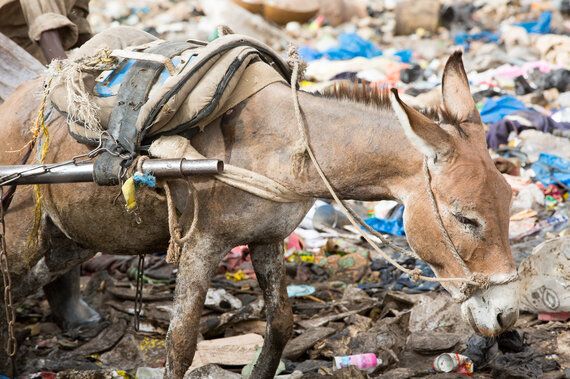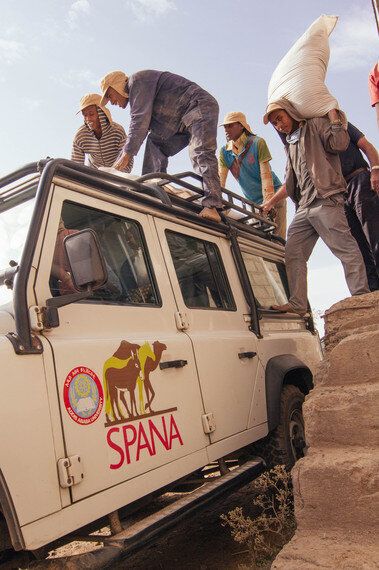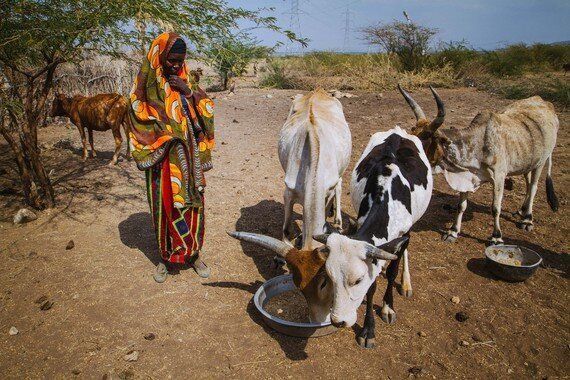
Photo credit: SPANA
I've coordinated relief efforts from the south east Asian tsunami to the North Korean cyclone. It's easy to become paralysed by the awesome scale of the challenge and the human misery. The only response is professional detachment, to focus on the job in hand.
But invariably that cool, rational focus is impossible to sustain when it comes into contact with those who have lost everything, the people who are looking to you for hope in the most hopeless of places.
So it was for me when I worked in Dabaab, what was then the world's largest refugee camp, on Kenya's border with Somalia. In this sprawling tented city, hundreds of thousands of refugees escaping war and famine were huddled together in a camp built for just 90,000, with failing infrastructure and poor healthcare.
"I have lost everything. There is nothing to return to. This is now my home." These words were spoken to me by a young man of no more than 25, resigned to life in this desperate place.
Alongside him was a second man, a few years older and with a similar story to tell, also escaping the chaos and conflict of Somalia. But although his story was a familiar one, he was not one of the hundreds of thousands of new arrivals. Three years after arriving in the camp, he had lost all expectation of returning to an independent livelihood - he was caught in an aid trap, dependent and hopeless.
All that separated him from his neighbour was time: neither had any chance of rebuilding the lives they had lost.
As I spoke to others around the camp, it was impossible to avoid the conclusion that while the international community has proved itself capable of mobilising in times of emergency, of delivering vast and vital relief operations that undoubtedly save lives, we have so often failed to protect livelihoods. Until we can do that, camps like Dabaab will swell in number and mass migration - now no longer an issue the developed world can ignore - will continue.
But how to go about that strategic shift? Let's start with a simple fact that so many - including some of the humanitarian aid organisations - are apparently oblivious to. So often the people facing famine and insecurity - particularly in east Africa - are pastoralists. They may have no permanent homes and few possessions, but they do have animals - lots and lots of animals.
Few people, even leaders of international aid organisations, recognise the extraordinary dependence of less developed communities on animals. Over a billion people worldwide depend on animals for their livelihoods, with half the world's population relying on them as their main source of power. Just one working animal can support the livelihoods of an extended family of up to 30 people.
To foresee a humanitarian tragedy in pastoralist communities, you don't need a crystal ball. Just look at livestock health, a key precursor to famine. As I write, livestock are dying across east Africa, with communities facing the worst drought in years. 20 million people are thought to be affected, with 12 million already dependent on food aid. Emaciated animals have lost their value and, once again, the spectre of famine looms.
It's not too late to prevent the worst of this crisis, but we must act now. Waiting until famine is declared, once both the animals and any hope of a sustainable future for communities are dead, is not enough. By protecting cattle and working animals, often for short periods, perhaps just until the rains, won't just save lives, it will also save livelihoods. This ensures that when the immediate crisis is past, communities across the region can return to sustainable and independent lives.
If we fail, the alternative is a life of dependency for millions of people, not just for today but for years to come. It's also a future of greater insecurity and conflict, migration and instability - and in a globalised world, these are no longer local problems.
I've recently joined SPANA, an international NGO that is leading the way in finding animal-focused solutions to humanitarian crises.

Photo credit: SPANA
The last time east Africa faced a significant famine was 2011. Then, SPANA was able to protect livestock in villages across northern Kenya through a programme which fed 50,000 animals while providing water and vaccinations. When the autumn rains finally arrived, livestock numbers grew rapidly and communities quickly returned to independence.
Across the border, in neighbouring Somalia, out of our reach, livelihoods were destroyed forever and communities broken. The lucky ones may have found their way to bleak places like Dabaab. Some young men, having lost their animals, were potential recruits for terrorist groups like al-Shabaab. Many more began long journeys in search of new lives elsewhere.
Today SPANA is hard at work again, this time in one of the worst hit regions of Ethiopia. Alongside an emergency feeding programme, we are working on longer term measures, planting drought-resistant grasses to provide a sustainable food supply for livestock.
Our work is local, community-focused and takes place away from the media spotlight. With attention turning once again to east Africa and another malnutrition crisis, the international community must learn the lessons of past failures. Once the animals are gone, we have lost all hope of protecting livelihoods and sustainable communities. If a future of dependency is our only solution, we will have failed once again.

Photo credit: SPANA